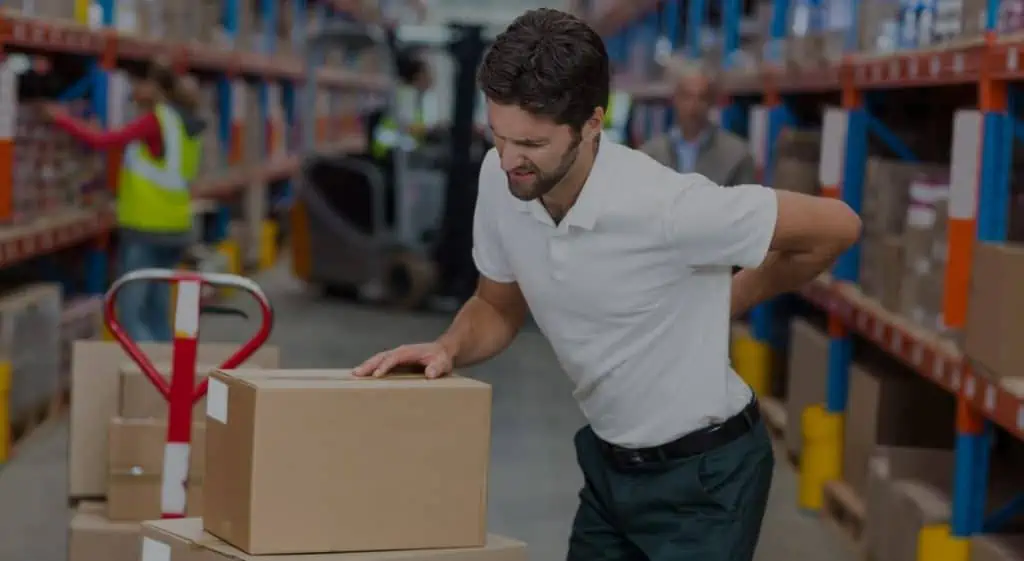Material Handling: There Is No Substitute for Safety
It’s getting late and you still have that last shipment to get out of your loading dock. By ignoring “minor” safety practices, the truck will be loaded and ready to go faster (and so will you).
You spin your forklift around and floor it to pick up the next pallet and then it happens.
Instead of checking the mirrors for obstructions, you hit the accelerator only to hear a loud crash. Instead of throwing back a brew with the boys, you are filling out incident reports and hoping you still have a job tomorrow.
Unfortunately, this is more common than you might think.
Forklifts were the source of 70 work-related deaths in 2021 and 7,290 nonfatal injuries involving days away from work in 2020
According to the Material Handling Institute and OSHA, warehouses are magnets for accidents.
Between moving vehicles and machinery as well as repetitive lifting, material handling workers rank among the highest in workman’s comp claims. This is why practicing good safety habits is critical for maintaining an efficient warehouse operation.
Safety in material handling and warehousing is a must, not an option. Let’s explore some valuable tips on keeping your workplace safe.
Maintain Cleanliness and Uniformity of Your Warehouse
Warehouses are frequently susceptible to slip-risks from spills or temperature changes, making floors wet. Foreign materials on the floor or uneven surfaces add to the dangers of slipping and tripping.
Here are a few simple tasks you can accomplish each day to help limit the risks from wet floors and other potential hazards:
- Clean floor regularly
- Fix potential trip hazards
- Use anti-slip products when possible
These simple tips can help you keep your warehouse or distribution center floor free from clutter, spills and safety risks.
Ensuring Proper Forklift Operator Training
The forklift is a modern material handling wonder when used properly.
But, It’s an accident waiting to happen in the hands of an inexperienced operator. Following these simple safety procedures can help limit risks for operators and workers alike:
- Don’t drive faster than five mph when carrying a load
- Be aware of other vehicles and foot traffic
- Take stock of surface conditions and potential hazards
- Use a non-visual alert system, like the forklift horn, when necessary
Even with all these tips, the heart of proper forklift safety is maintenance.
A proper maintenance schedule helps eliminate preventable issues and allows your operator to focus on other potential hazards in the warehouse.
Moreover, you need to develop strict third-party and internal training programs and processes.

Cultivate a Culture of Situational Awareness
The loading and unloading of products make for a constant stream of traffic in most warehouses. Even with equipment like catwalk mezzanines that put foot traffic at a different level than lift truck traffic, it’s still essential for workers to understand where they are and the risks of the environment.
A momentary distraction won’t only disrupt traffic flow; it can cause serious injury as well.
Always be aware of your surroundings. Warehouse injuries are preventable when you pay attention and anticipate potentially hazardous situations.
When possible, implement training procedures around this safety topic. Giving your workers the safety information they need is such an important part of managing a warehouse or distribution center.
Incorporate Ergonomic Equipment and Proper Lifting Technique
Back injuries account for the largest portion of material handling claims due to repetitive lifting or lifting objects improperly.
Helping employees understand the physics of lifting is important, but providing ergonomic resources can help protect workers too.
Here are a few ergonomic product considerations for a warehouse environment:
- Lift tables: these adjustable platforms can be raised or lowered to an optimal height.
- Hand trucks: hand trucks take the brunt of a load’s weight.
- Support belts: these provide additional support during lifting
- Adjustable workstations: workstations can be adjusted for height, reach or task requirements.
- Ergonomic tools: for example, tools with padded or power grip handles.
But ergonomic tools and warehouse safety equipment can only get you so far. You’ll also need to educate employees on proper lifting techniques.
The human body isn’t designed to bear heavy loads in unnatural positions.
Lifting with the legs, keeping the back straight and holding the load close to the body are critical techniques that can help protect the spine and prevent strains.

Installing and Maintaining Pallet Rack Appropriately
The safe and efficient use of pallet racking begins prior to installation. You should always select racking that meets the capacity and weight requirements for the products stored in the racks as it relates to product size and weight, as well as industry standards like OSHA — close enough may not be safe enough.
Pallet racks are extremely durable. However, even durable products require ongoing care and maintenance. Racks need regular inspection to ensure the structure remains sound.
Simple things such as tightening bolts and inspecting for damage can make the difference between years of trouble-free material handling and potential disaster. Adding protective measures, including bollards and guardrails, can prevent damage from wayward forklifts and keeps employees safe too.

Searching for Durable and Affordable Storage Systems?
From pallet racks to warehouse mezzanines, East Coast Storage Equipment has what you need. CONTACT US
You should also implement a regular cleaning schedule for your storage equipment. Here are some simple steps you can follow:
- Clean the area and remove all items from the racking structure.
- Sweep and vacuum to collect loose dust, dirt and debris. Accumulated dust can cause corrosion.
- Use a soft, damp cloth or sponge to wipe down the racking components. If you need to, use a mild detergent, but try to avoid harsh chemicals that could affect the finish.
It’s a great idea to combine an inspection with a thorough cleaning. Here is when your team has the best opportunity to check for rust, corrosion and damage.
Unfortunately, pallet racks do incur damage, and when that happens, you need to do something quickly. Here at East Coast Storage Equipment, we specialize in maintaining and repairing pallet racking. To learn more about this service, please contact one of our knowledgeable representatives.
East Coast Storage Equipment: Your Partner in Warehouse Safety
Warehouse safety is not a single event but a comprehensive approach to warehouse management that puts worker safety at the forefront of all operations. Whether it’s inspecting equipment for damage or using ergonomic tools, making sure your team is safe should always be a top priority.
Here at East Coast Storage Equipment, we pride ourselves on offering our customers the widest selection of durable and affordable material handling and storage equipment in the Nation.
But, more than just a supplier, we can help your team design and install your storage system to strict industry safety standards. For more information on our services and equipment options, be sure to connect with the ECSE team today.
I was surprised to see that back injuries were the most common injury. That is bad for the employees and the business since it slows things down. I like your tip to make sure that you have ergonomic resources to help prevent these injuries. Would it be smart to have regular trainings on how to use these things?